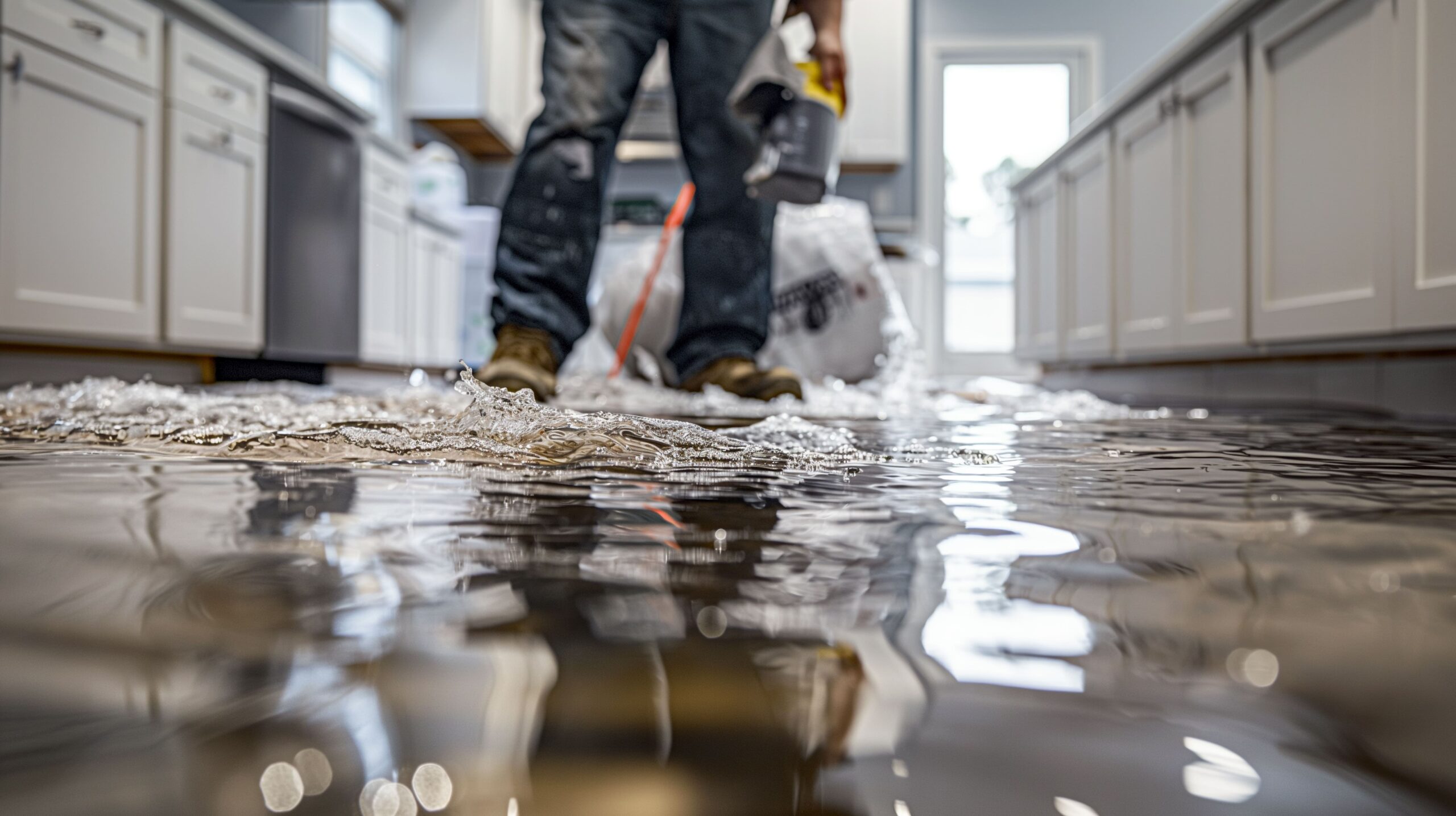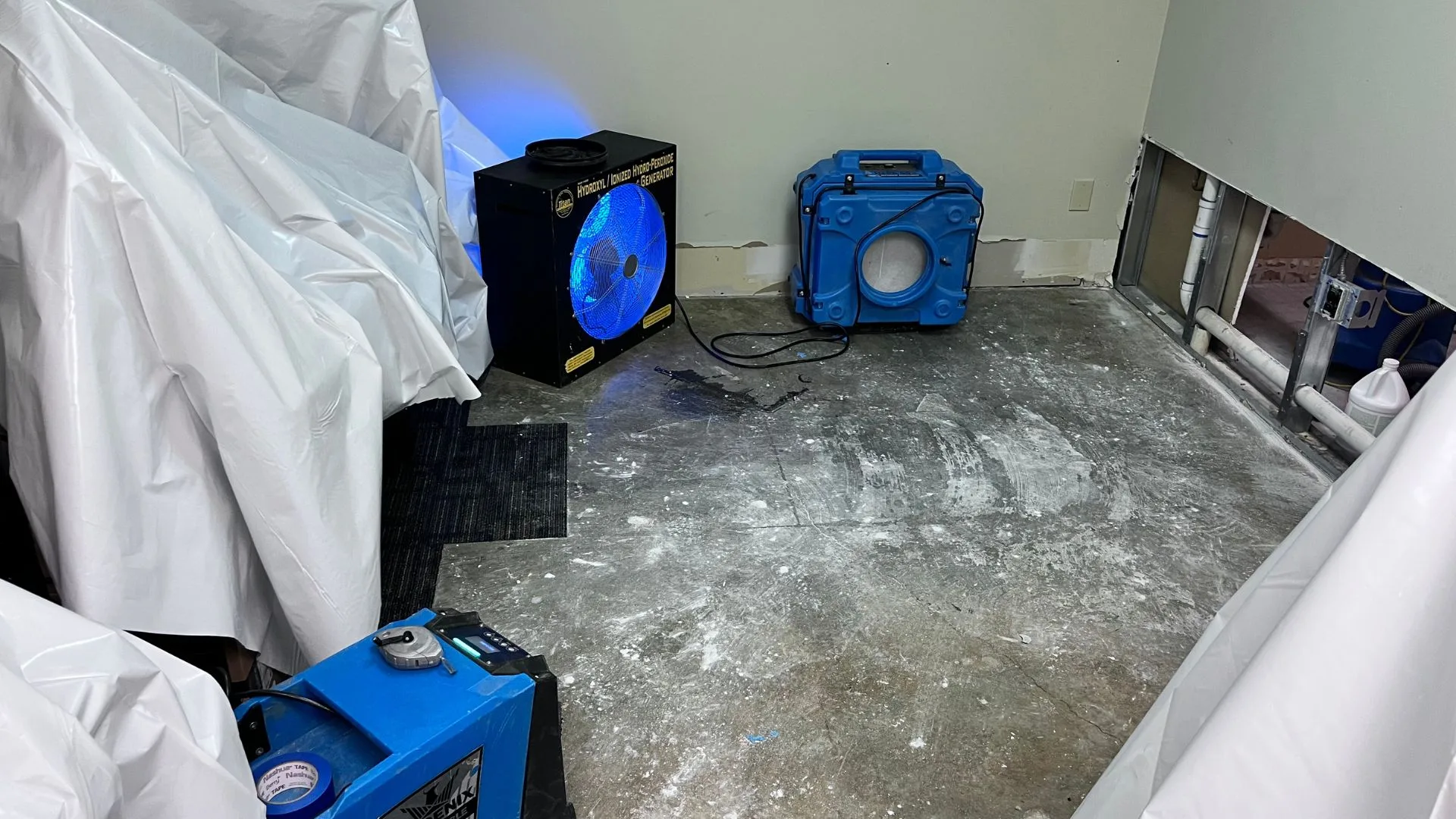7 Key Reasons You Should Never Delay Flood Damage Restoration
Important Actions to Comply With for Efficient Water Damage Restoration in Your Home
When encountered with water damages in your home, knowing the important steps for reliable restoration can make all the distinction. You need to analyze the damage and warranty security before dealing with the problem. Quiting the source of water is necessary, however it's simply the beginning. As soon as you've taken care of that, there's a series of activities you need to take to shield your property from additional problems. Allow's discover what you ought to do next.
Examine the Damages
When you discover water damages in your house, the initial step is to analyze the damage completely. Beginning by determining the resource of the water invasion. Look for leakages, burst pipelines, or other concerns causing the trouble. Next, examine the influenced areas for noticeable signs of damage, including discoloration, mold and mildew, or warping growth. Do not forget to search in hidden places like behind wall surfaces or under flooring, as water can leak into these locations unnoticed.Document the damage by taking clear images and notes. This will aid you when discussing the circumstance with your insurance coverage copyright or remediation professionals. Focus on the type of materials influenced, as different products require different reconstruction methods. Examine the level of the damage. Is it considerable or small? Understanding the scope will assist you in making a decision whether to manage it on your own or contact the specialists for an extra comprehensive repair procedure.

Make sure Security
Prior to you begin any reconstruction job, assuring your safety is vital. Analyze the problem of your home. If the water's deep or if you notice electrical risks, don't go into the area. Turn off the electrical energy and gas supply to avoid accidents. Wear protective equipment like boots, masks, and gloves to shield yourself from impurities or mold.It's important to stay knowledgeable about your environments; expect sharp items and unsafe surfaces. Treat it as hazardous waste if the water is from a sewage backup. Maintain youngsters and pet dogs away from influenced locations to prevent exposure.Once you've taken these precautions, you can continue with the reconstruction process. Keep in mind, your safety precedes, and if you're ever before unsure, it's ideal to consult a specialist. Taking these actions will certainly aid guarantee you prepare to deal with the restoration securely and properly.
Quit the Resource of Water
After guaranteeing your security, the next action is to quit the source of water. Identify where the leak is coming from. Maybe a burst pipeline, a defective device, or perhaps hefty rainwater going into with a damaged roofing system. If it's a pipes issue, transform off the main water supply to your home to avoid further flooding. For appliances, disconnect them and turn off their water supply valves.If the resource is outside, like rain, attempt to divert it away from your home using sandbags or various other barriers. For small leakages, you could be able to make use of tape or a sealant temporarily till a specialist can repair it. Bear in mind, attending to the resource rapidly is important to decreasing damage and avoiding mold development. As soon as you have actually quit the water, you'll be in a far better setting to go on to the following steps in the reconstruction procedure.

Eliminate Excess Water
Act swiftly to eliminate excess water, as standing water can result in a lot more considerable damages and mold growth. Collect your tools: a wet/dry vacuum cleaner, buckets, and towels. You can make use of towels to soak up the dampness if the water is shallow. For much deeper water, a wet/dry vacuum is your best choice. Make certain to empty the vacuum cleaner frequently to stay clear of overflow.If the water is contaminated, like from a sewer backup, use safety gear, consisting of gloves and masks, to keep on your own risk-free. Once you have actually removed as much water as feasible, inspect for surprise pockets of moisture in edges and under furniture, as these can nurture mold.Don' t fail to remember to switch off electric home appliances and power outlets in wet locations to stop risks. This first action is important in decreasing damage and setting the phase for a successful repair process.
Dry and Dehumidify the Location
It's essential to dry and dehumidify the location extensively as soon as you have actually removed the excess water. Begin by utilizing dehumidifiers efficiently to draw dampness out of the air and avoid mold and mildew development. Watch on moisture levels to ensure the room dries totally.
Get Rid Of Standing Water
To efficiently tackle water damage, you require to concentrate on eliminating standing water as promptly as possible. Beginning by gathering required devices, like a wet/dry vacuum cleaner or a pump, depending upon the volume of water. A vacuum cleaner ought to do the method if the water is shallow. For larger quantities, a pump is extra efficient. While functioning, ensure to use safety gear to keep on your own secure from contaminants. As you remove the water, focus on hidden locations like under furniture or in edges where water could gather. When you've eliminated the majority, your room will certainly start to dry out. This action is important, as remaining water can result in mold development and a lot more considerable damages.
Usage Dehumidifiers Properly
Just how can you properly make use of dehumidifiers to completely dry and dehumidify your room? Start by positioning your dehumidifier in one of the most affected location, preferably where water damages is most serious. Ensure to close all doors and windows to develop a closed setting. Switch on the dehumidifier and set it to the proper humidity degree, typically around 30-50%. Vacant the water collection storage tank frequently, or take into consideration utilizing a model with a continual drain alternative for benefit. Ideally, utilize followers to improve airflow, assisting the dehumidifier work a lot more efficiently. Maintain the dehumidifier running until you're positive that the location is completely dried, avoiding mold growth and added damage (Smoke Damage Restoration). This action is vital for effective water damage restoration
Monitor Moisture Degrees
Tracking humidity levels is vital during the drying out process, as it assists ensure your space stays without excess moisture. Buy a reliable hygrometer to track humidity precisely. Preferably, you intend to keep degrees in between 30% and 50%. You might require to adjust your fans or dehumidifiers to boost airflow if moisture analyses climb above this variety. Inspect the analyses routinely, specifically in locations vulnerable to wetness, like washrooms or basements. If you discover relentless high moisture, consider increasing ventilation or using extra dehumidifiers. Remaining on top of these levels not only speeds up the drying process yet also stops mold and mildew development, guaranteeing your home keeps comfortable and risk-free.
Tidy and Disinfect Affected Surfaces

Restore and Fix Your Home
After cleansing and sanitizing the impacted areas, it's time to bring back and repair your home. Begin by examining the damage. Check for architectural concerns, like damaged floors or walls, and attend to any essential repair services. Replacing damaged drywall or floor covering is necessary for both aesthetic appeals and safety.If your furniture or belongings were impacted, consider whether they can be restored or need replacement. Tidy or expertly recover products where possible.Next, paint walls and touch up any kind of areas that require attention. This not just enhances look however also secures surfaces from future water damage.Don' t neglect to inspect your pipes and appliances for leakages, making sure whatever's functioning appropriately. Take into consideration mounting a dehumidifier to avoid future dampness issues. By taking these actions, you'll recover your home to its former splendor and produce a safer living setting.
Often Asked Inquiries
The Length Of Time Does Water Damage Reconstruction Commonly Take?
Water damage restoration normally takes anywhere from a few days to numerous weeks, depending upon the degree of the damages (Flood Damage Restoration). You'll want to examine the scenario quickly to reduce additional difficulties and guarantee appropriate repair
Will My Insurance Policy Cover Water Damages Restoration Prices?
Your insurance policy could cover water damages restoration costs, but it depends on your policy. Check your protection information and call your insurance policy representative to clarify what's included and what you need to sue.
Can I Deal With Water Damage Repair Myself?
You can deal with water damage restoration yourself, but it's important to analyze the scenario. You may want to call professionals if it's comprehensive. Constantly prioritize safety and ensure you have actually obtained the right devices.
What Are the Signs of Hidden Water Damages?
You could notice signs of covert water damage like warped walls, moldy smells, or staining. If your floors really feel squishy or you more info place mold, it's time to examine even more before the situation intensifies.
Exactly How Can I Protect Against Future Water Damage in My Home?
To stop future water damage in your home, you need to routinely evaluate plumbing, seal cracks, preserve seamless gutters, and guarantee appropriate water drainage. Installing a sump pump and wetness obstacles can also help maintain your room dry. When you find water damages in your home, the first step is to analyze the damage thoroughly. Act swiftly to get rid of excess water, as standing water can lead to more substantial damages and mold and mildew growth. To successfully take on water damage, you require to focus on getting rid of standing water as quickly as possible. As you eliminate the water, pay focus to concealed areas like under furniture or in edges where water may gather. Water damages remediation generally takes anywhere from a couple of days to several weeks, depending on the degree of the damage.